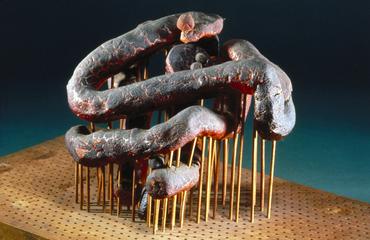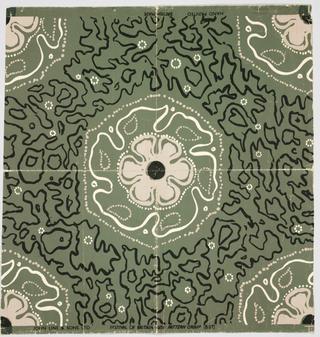
Sodium chloride, ball and spoke crystalline structure model, c 1965.
- Made:
- England
- maker:
- Robert Wetmore
Crystal structure model - sodium chloride
British chemists and physicists have made notable contributions to our knowledge of the structure of molecules and crystals. Particularly fruitful was the group at the Royal Institution where Sir William Bragg was resident professor (1923-1942).
Sodium chloride was the key to the understanding of all ionic crystals.
Lawrence Bragg first analysed the structure of some alkaline halides from their Laue photographs in 1913.
Bragg assigned Miller indices to the Laue spots. These define the planes of atoms which reflect the X-ray beam. This model of the unit cell of sodium chloride illustrates his results. The sodium ions (gold) form a face-centred cubic lattice and they alternate with chloride ions (yellow) which also have a face-centres cubic structure.
Using his father’s spectrometer, Bragg confirmed the sodium chloride structure in the summer of 1913, proving that the Bragg spectrometer was a powerful analytical tool.
Bragg’s results allowed him to calculate the distance between sodium and chloride in the lattice and also gave the wavelength of the X-rays.




